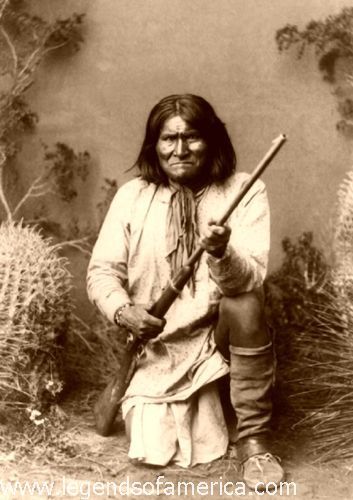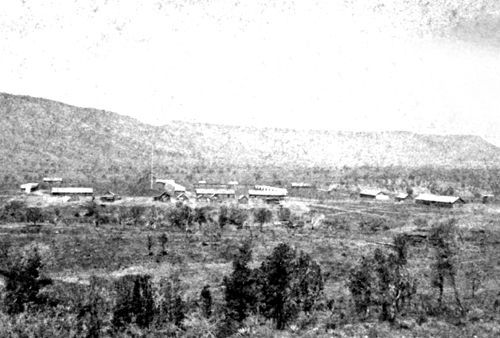
Camp Apache, by Timothy H. O Sullivan, 1873.
From its founding in 1870 until Geronimo’s capture in 1886, Fort Apache, Arizona, was regularly involved in the Indian Wars of the area. It was first called Camp Ord, in honor of General O.C. Ord, Commander of Arizona, when it was built in the spring; however, just a few months later, the name was changed to Camp Mogollon in August, then Camp Thomas in September.
The post was finally designated as Camp Apache on February 2, 1871, as a token of friendship to the very Indians the fort soldiers would soon spend so many years at war with. The fort’s initial purpose was to guard the nearby White Mountain Reservation and Indian agency.
Situated at the end of a military road on the White Mountain Reservation, which adjoined the San Carlos Reservation, the fort guarded the White Mountain Agency. At the same time, Fort Thomas watched over the San Carlos Agency. However, both reservations would become the focus of Apache unrest, especially after troops moved the troublesome Chiricahua in 1876 from Fort Bowie to the White Mountain Reservation.
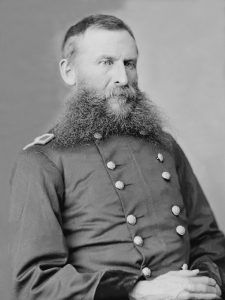
General George Crook, about 1870
In constant turmoil, the reservations were noted for their unhealthy locations, overcrowding, and dissatisfied inhabitants. Sparking the discontent were inefficient and corrupt agents, friction between civil and military authorities, feeble attempts to make farmers of the nomadic Indians, and encroachment on the reservations by settlers and miners. As a result, many of the Indians left the reservations to resume their hunting, gathering, and raiding lifestyle, creating a public outcry from the settlers.
In 1871, General George Crook, who had established his reputation as an Indian fighter in the Snake War in Idaho and Oregon, was named commander of the Department of Arizona. By August of that year, he recognized that his soldiers were no match for the fierce Apache he was sent to subdue and made his first trip to Fort Apache. At the reservation, he recruited about fifty men to serve as Apache Scouts, who would play a vital role in the success of the Army in the Apache Wars, which ensued for the next 15 years.
After recruiting the scouts, Crook organized his Tonto Basin campaign and moved to Camp Verde to implement his tactical operations. During the winter of 1872-73, a number of mobile detachments, using Apache scouts, crisscrossed the Tonto Basin and the surrounding tablelands in constant pursuit of renegade Tonto Apache and their Yavapai allies. After forcing as many as 20 skirmishes, in which some 200 Indians were killed, they finally began to wear down their quarry.
On April 5, 1879, Camp Apache had become significant enough to be renamed Fort Apache.
The battles with the Apache continued as the soldiers fought various renegade bands that included such famous warriors as Geronimo, Natchez, Chato, and Chihuahua. It was only after Geronimo was captured for the last time in 1886 that the Apache Wars finally ended.
Though its wild frontier days were over, Fort Apache continued as an active post until 1924. The Apache Scouts that General Crook had employed were transferred to Fort Huachuca in southern Arizona, where they continued to serve. The last three Apache Scouts retired in 1947.
When the fort closed, its buildings were turned over to the Bureau of Indian Affairs. Today, several buildings continue to stand on the White Mountain Reservation.
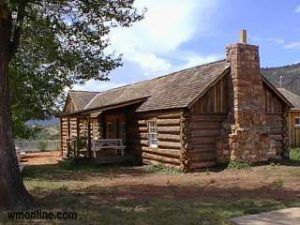
The first Commanding Officer’s quarters were constructed in the spring of 1871, courtesy of White Mountain Online.
The Fort Apache post office is located in the adobe adjutant’s building. A log building, one of the oldest structures and reputedly the residence of General Crook and the stone officers’ quarters, is today home to teachers and other Bureau of Indian Affairs employees. The sutler’s store and commissary building, cavalry barns, and guardhouse have not been significantly altered. One of the original four barracks, an adobe building in bad disrepair, houses the farm shop for the Indian school. The parade ground provides a recreational area. The cemetery no longer contains dead soldiers but does contain the bodies of Indian scouts.
The fort is located at the headquarters of the Fort Apache Indian Reservation, adjacent to the town of Fort Apache. From Globe, take US 60 northeast 66 miles; turn east on State 73 and drive about 27 miles to Fort Apache.
Contact Information:
Fort Apache Historic Park
P.O. Box 628
Fort Apache, Arizona 85926
928-338-1392
Compiled and edited by Kathy Alexander/Legends of America, updated November 2025.
Also See:
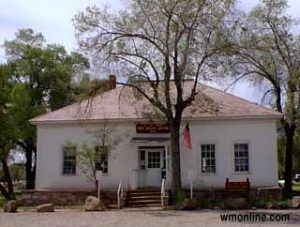
The old Fort Apache Adjutant’s Office now serves as the post office, courtesy of White Mountain Online.
Apache – The Fiercest Warriors in the Southwest
Cochise – Strong Apache Leader
Geronimo – The Last Apache Holdout
Primary source: National Park Service

